The LG G4 Review
by Joshua Ho on July 30, 2015 10:00 AM EST- Posted in
- Smartphones
- Qualcomm
- LG
- Mobile
- Snapdragon 808
- LG G4
System Performance Cont'd
While we’ve seen how the LG G4 performs in some general system workloads, in the interest of focusing a bit more strongly on GPU performance and gaming workloads we’ve also run a suite of benchmarks that are closer to mobile games in terms of workload and more strongly emphasize GPU performance. These tests are usually representative of burst/turbo performance. Those interested in steady-state performance can take a look at our extended rundown tests in the battery life section.
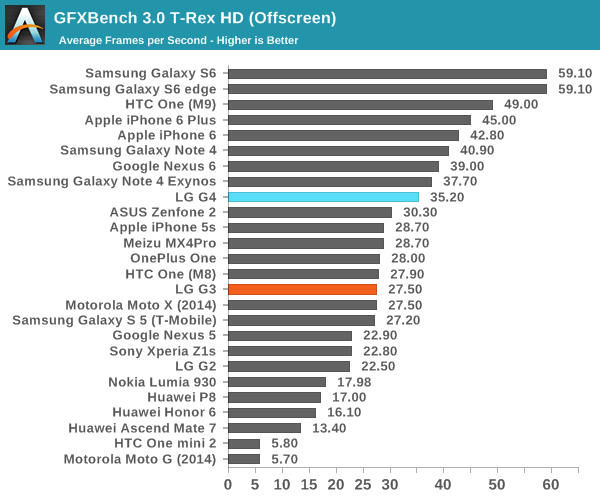
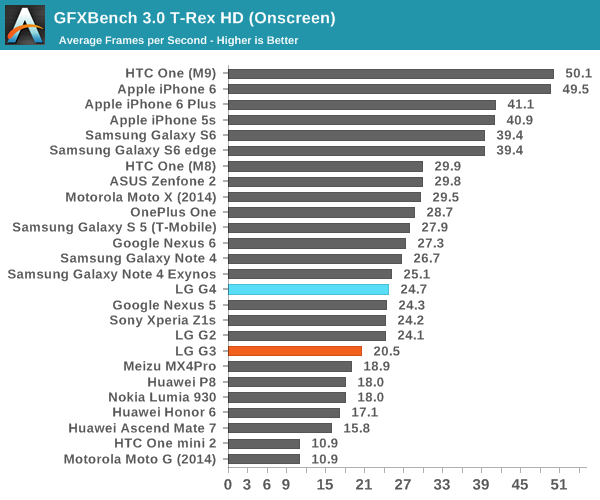
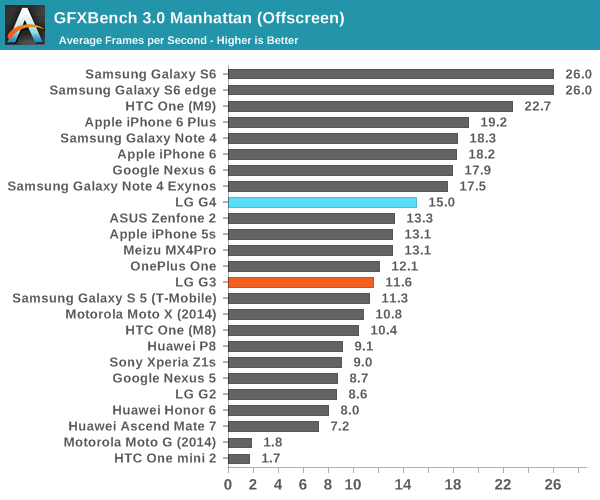
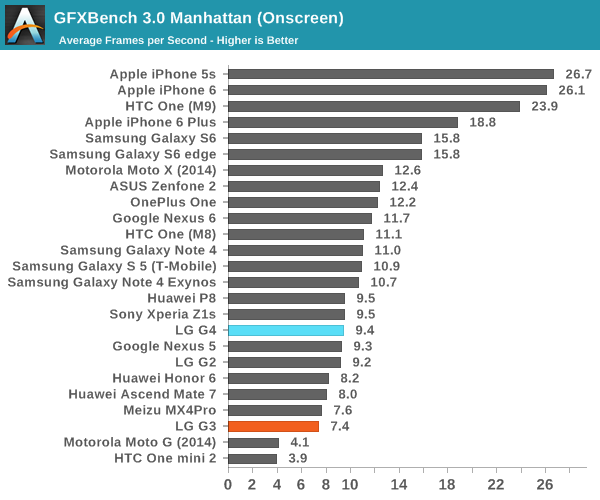
In GFXBench, we can see that the Adreno 418 GPU is a definite step up from the Adreno 330 in the Snapdragon 801, but not quite at the level of the Snapdragon 805's Adreno 420. As a result, on-screen performance is similar to the Snapdragon 800's Adreno 330. This seems to hold in both tests, which suggests that the balance between shader hardware and texturing hardware is relatively similar to the Adreno 330.
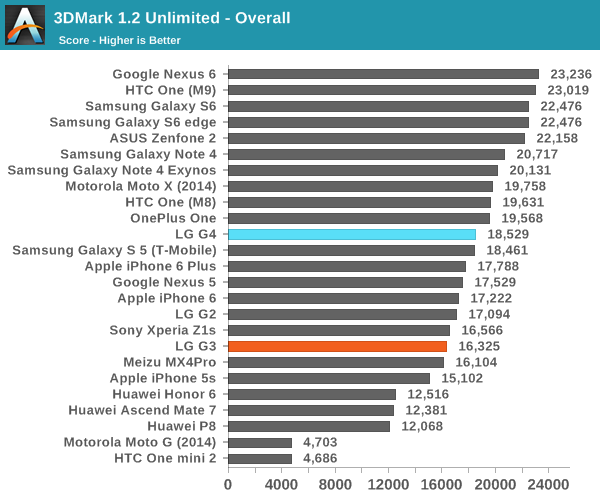
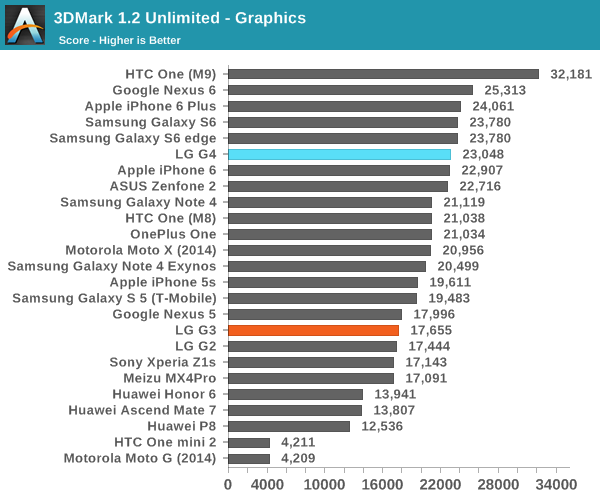
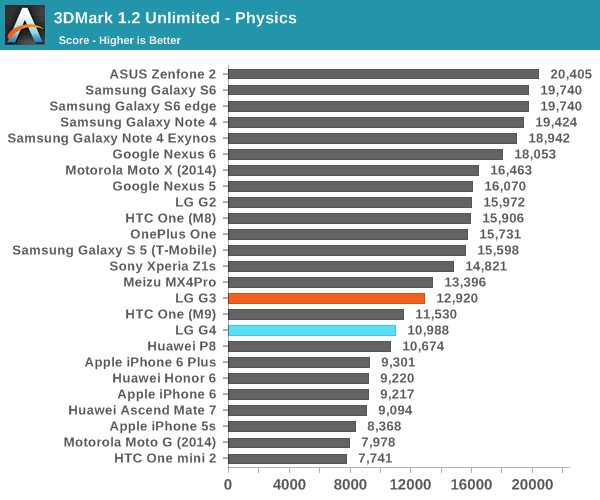
3DMark is a bit of an odd test in the sense that the factors that influence performance in the test are generally hard to predict, but we see a significant deficit in the physics test as it seems to be strongly influenced by main memory latency as the test is cache-unfriendly. The graphics test also indicates a minor improvement over the Snapdragon 801, likely due to differences in architecture from the Adreno 330 to 418 that are coming through in this test. At any rate, the end result is that the G4 ends up around the same level as Snapdragon 801 devices.
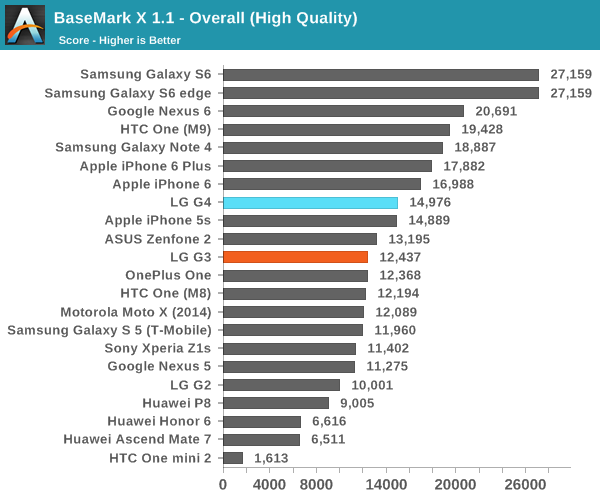
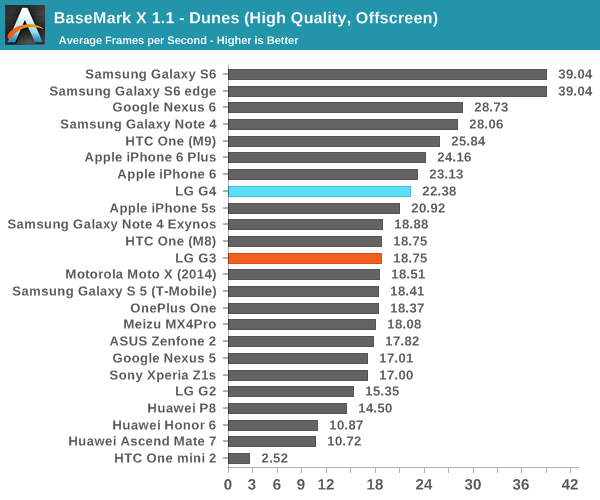
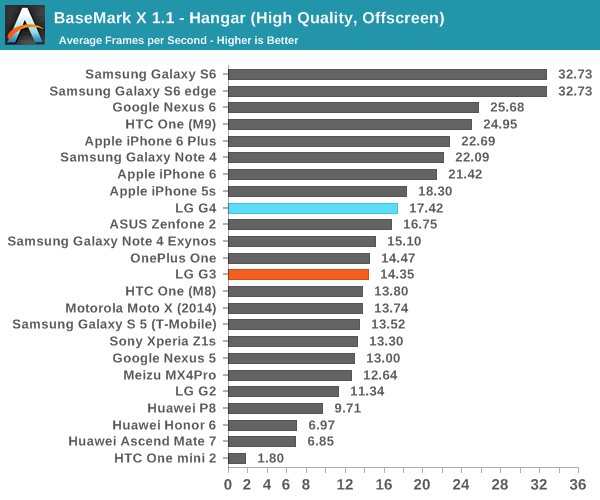

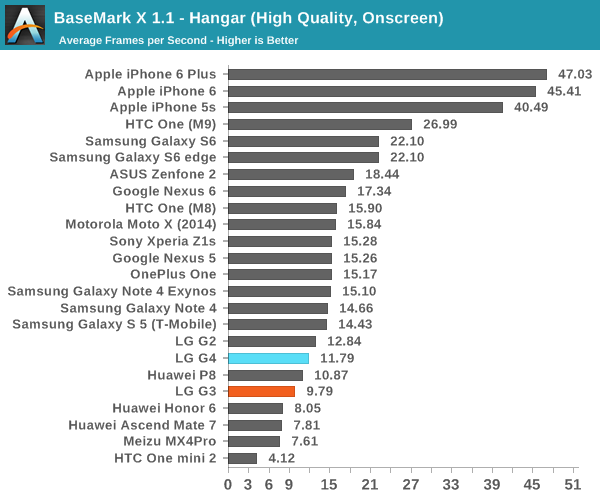
In this test we see that the G4 has a noticeable uplift relative to various Snapdragon 801 devices, but the improvement continues to be slim enough that in on-screen performance the 418 is really comparable to the Adreno 330 in the Snapdragon 800 rather than the Snapdragon 801, which puts it just below the Adreno 420. Overall, the LG G4 is definitely fast enough to enable a good user experience, although the somewhat weaker burst GPU performance leaves it at a handicap relative to anything equipped with an Exynos 7420. Given some of the issues we've seen with the Snapdragon 810, it seems that LG's choice was a wise one.
NAND Performance
Although NAND performance has always been important, until the Nexus 7 (2012) it wasn’t really an area that received a lot of scrutiny. For the most part, people didn’t really pay attention to storage beyond how much storage was available. As a result, this aspect of the device was often subject to aggressive cost control, often to the detriment of performance. However, in the case of the Nexus 7 we really started to see how cutting too far could make a device almost unusable instead of just slow and frustrating.
In the interest of testing this aspect of device performance, we use Androbench with some minor modifications to test settings to get a rough idea for how fast the internal storage solution is. In the case of the LG G4, it seems that Toshiba manufactures this NAND, named 032G74, but there’s otherwise not much information publicly available on this eMMC solution.
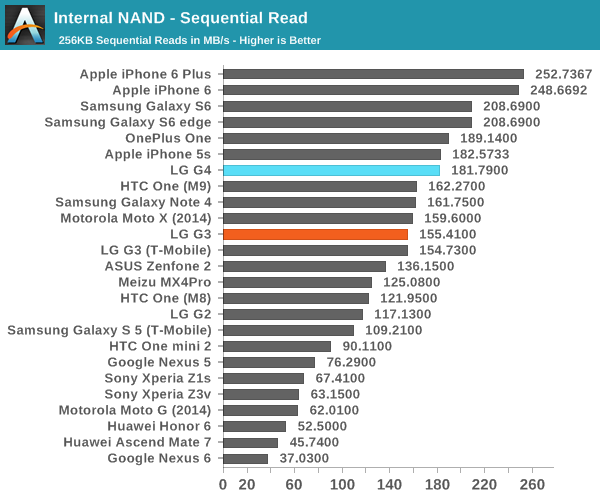
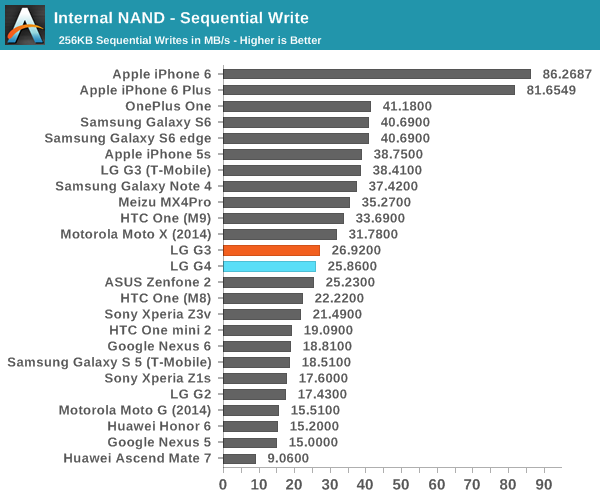
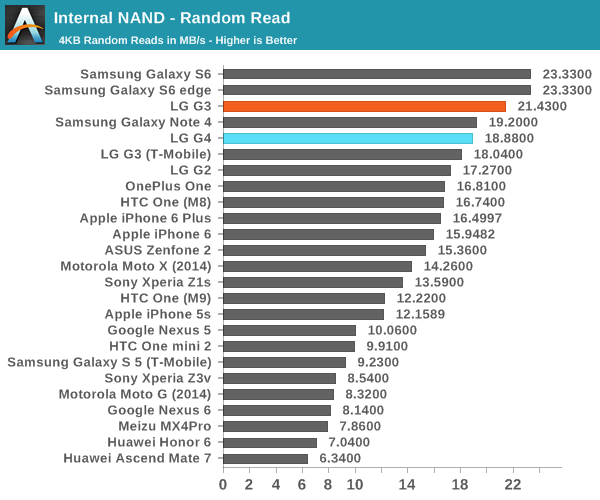
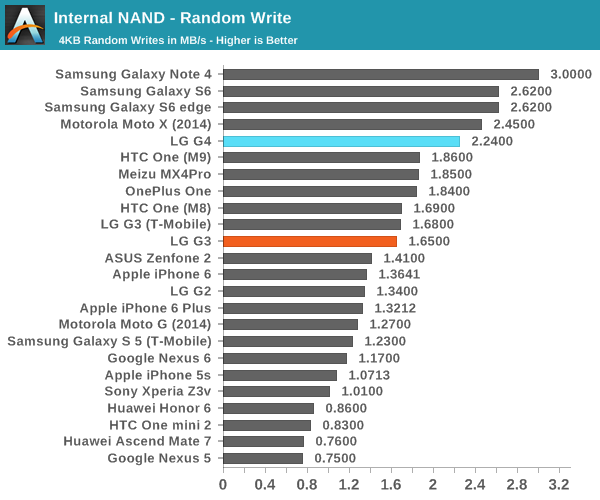
As far as I can tell, the LG G4 has relatively similar NAND performance relative to the G3, but the tuning appears to be somewhat different as the G3 is faster in random reads but the G4 is faster in random writes. Either way, the storage solution in the G4 is sufficient for good performance, although not quite as fast as the Galaxy S6. I suspect that in the absence of an SLC caching system similar to the variant of iPhone 6 that we tested that sequential reads/writes will continue to be relatively low.










84 Comments
View All Comments
hans_ober - Thursday, July 30, 2015 - link
Throttling compared to S810?JoshHo - Thursday, July 30, 2015 - link
Definitely less. S808 spends more time at higher frequencies than S810 even after 20 minutes.hans_ober - Thursday, July 30, 2015 - link
Thought I'd see a AT deepdive (a whole page :) ) on S808 vs S810.. especially what S808 loses compared to S810 (memory, GPU, CPU ) and throttling, perf vs time.JoshHo - Thursday, July 30, 2015 - link
I definitely hope to do that at some point.hans_ober - Thursday, July 30, 2015 - link
Thanks a ton!LoganPowell - Friday, November 27, 2015 - link
The L3 G4 is really good, however the Moto X Pure Edition is rated slightly higher (see http://www.consumerrunner.com/top-10-best-phones/ for example), so I would consider that one instead if I were you.ThisIsChrisKim - Thursday, July 30, 2015 - link
Looking forward to it :)niva - Thursday, July 30, 2015 - link
I was also expecting to see some sort of a technical comparison here related to the SD 808 vs. the SD 810. I for one also think the 1440 screen is overkill, especially in a sub 6" device using the SD 808.On the final page you went on to say the G4 and the S6 have a camera somewhat comparable to the iPhone 6+... and there you totally lost me. This is one of the things Anandtech can do without in the reviews, the iFanboyism.
BMNify - Friday, July 31, 2015 - link
@niva: Quit trolling Android fanboy, Anandtech and Josh are not ifanboy, they are stating the truth here, you can critic Apple for less ram or restrictive ecosystem but the latest iphone camera is amongst the best, only high-end Lumia phones can challenge or best Apple in this regard.bleached - Sunday, August 2, 2015 - link
Apple isnt rate in the top 5 best smartphone cameras (they haven't tested the G4) and Lumia isn't even close. This is from a camera specific website.